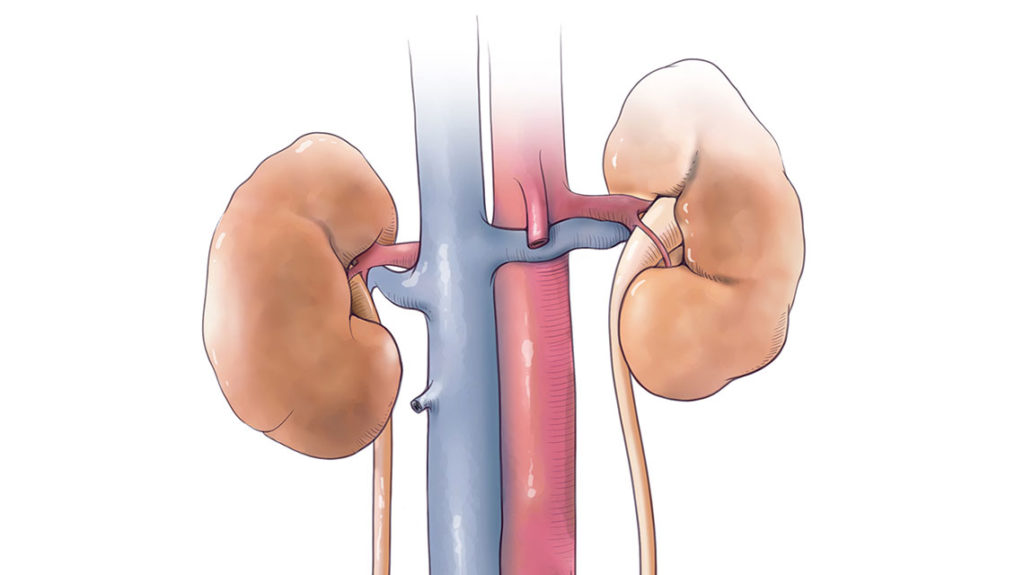Developing Predictive Tools for CAKUT
Developing Predictive Tools for CAKUT https://pediatricsnationwide.org/wp-content/uploads/2021/01/Urinary-system-No-Background-kidney-header-1024x575.jpg 1024 575 Leslie Feldman Leslie Feldman https://secure.gravatar.com/avatar/?s=96&d=mm&r=g- September 25, 2023
- Leslie Feldman

Pediatric nephrologists routinely see infants and children with congenital anomalies of the kidney and urinary tract (CAKUT) — the most frequent cause of childhood chronic kidney disease (CKD).
Some of these anomalies are not clinically significant, while others result in varying degrees of kidney function impairment. Half of all children receiving dialysis or kidney transplants have an underlying diagnosis of CAKUT. Because their outcomes vary tremendously, researchers are motivated to develop predictive tools to identify children with CAKUT who are especially at risk for significant kidney functional impairment.
As a step toward those tools, experts from Nationwide Children’s Hospital, in collaboration with Doug Matsell, MDCM, BSc, a pediatric nephrologist and physician-scientist at BC Children’s Hospital, Vancouver, and an expert on CAKUT outcomes, recently published a review and research study. The review focused on the prediction of renal outcomes in children with CAKUT. The research study established a prediction model to identify children at risk of reduced kidney function.
Developing a Prediction Model
In the study, “Predicting Outcomes in Children with Congenital Anomalies of the Kidney and Urinary Tract,” published in Pediatric Nephrology, the researchers and clinicians used a large CAKUT cohort to develop a prediction model that informs a risk-stratified clinical pathway.
“We examined the influence of a variety of predictors on the outcome of reduced kidney function, including the type of CAKUT, preterm gestation, presence of other congenital anomalies, initial estimated kidney function and initial kidney size,” explains Brian Becknell, MD, PhD, research director of the Kidney and Urinary Tract Center at Nationwide Children’s.
Study Uncovers Significant Predictors
The study found that posterior urethral valves, the most common congenital cause of bladder outlet obstruction, were significantly associated with reduced kidney function. Other significant predictors in the regression model were the kidney size and initial kidney function.
“We expected to find that specific types of CAKUT would be more likely associated with adverse renal outcomes,” says Dr. Becknell. “For example, if you are born with a single kidney, but it is large and otherwise structurally normal, you are far less likely to have significant kidney dysfunction, compared to being born with a process that affects both kidneys, such as renal dysplasia or bladder outlet obstruction. However, even within these classes of CAKUT, there is considerable heterogeneity, hence the need for this research.”
The researchers would like to validate and extend these findings in Canadian children to a separate cohort of U.S. children with CAKUT.
“If valid, we can deploy a risk calculator that will allow treating providers to estimate the likelihood that an infant with CAKUT will develop significant kidney dysfunction in childhood, says Dr. Becknell. “This can be shared with families and better ensure that resources are directed toward children with the highest risk.”
References:
- Harambat J, van Stralen KJ, Kim JJ, Tizard EJ. Epidemiology of chronic kidney disease in children. Pediatr Nephrol. 2012;27(3):363-373.
- Matsell DG, Catapang M, Becknell B. Predicting outcomes in children with congenital anomalies of the kidney and urinary tract. Pediatr Nephrol. 2023;38(10):3407-3415.
- Walawender L, Becknell B, Matsell DG. Congenital anomalies of the kidney and urinary tract: defining risk factors of disease progression and determinants of outcomes. Pediatr Nephrol. 2023;10.1007/s00467-023-05899-w.
Image credit: Nationwide Children’s
About the author
-
Leslie Feldmanhttps://pediatricsnationwide.org/author/leslie-feldman/






